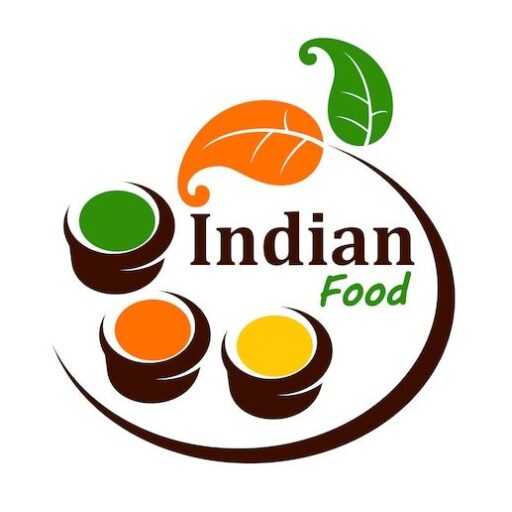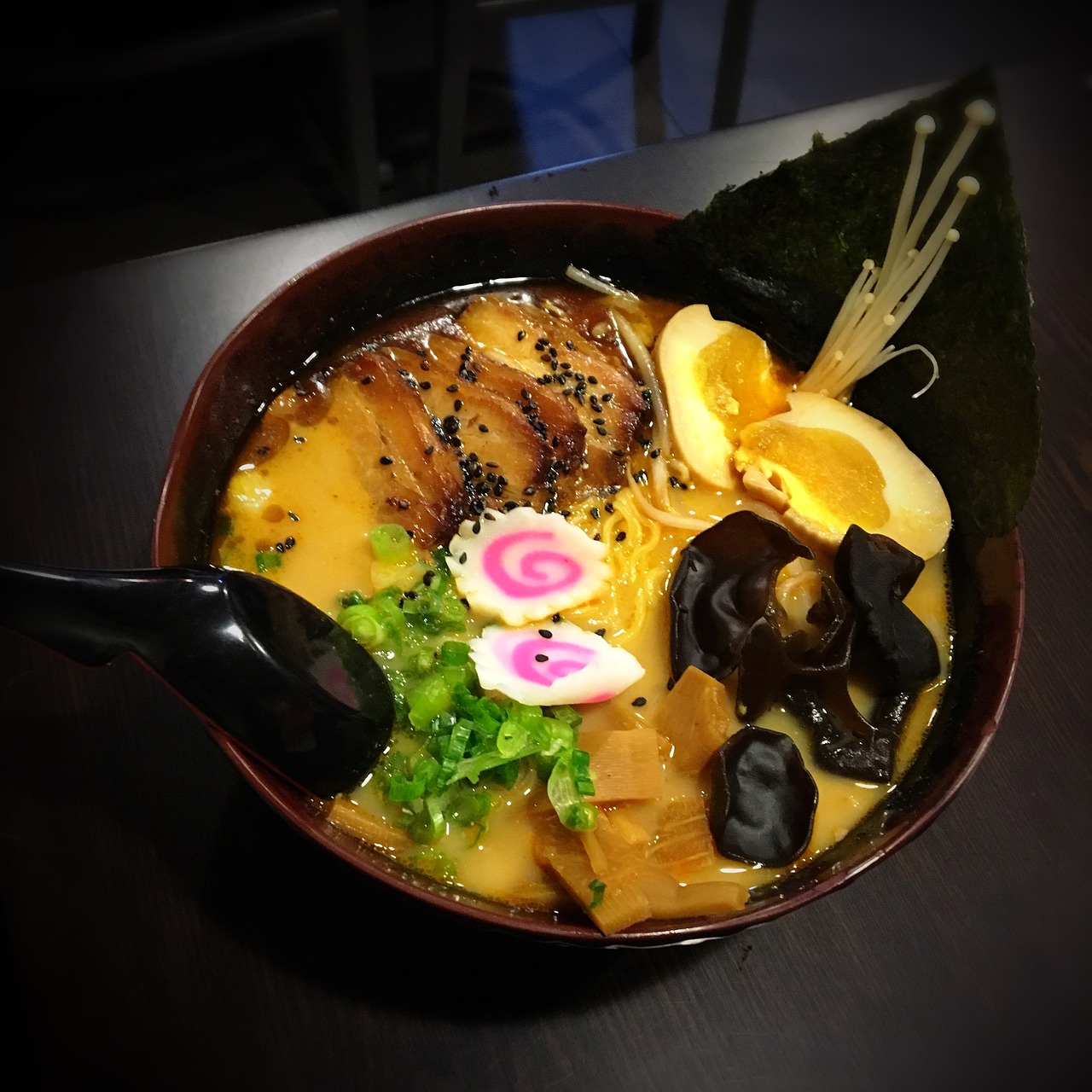Ramen History – A Delicious Journey from China to Japan and Beyond
🏮 What is Ramen?
Ramen is a Japanese noodle soup dish made with Chinese-style wheat noodles served in a flavorful broth, typically garnished with toppings like sliced pork (chashu), boiled eggs, seaweed (nori), bamboo shoots (menma), and green onions.
📜 Brief History of Ramen
1. Chinese Origins (Late 1800s – Early 1900s)
- Ramen originated from Chinese wheat noodles called “la mian” or “chuka soba”.
- Chinese immigrants introduced the noodle dish to Japan in the late 19th century, particularly in port cities like Yokohama and Kobe.
- Early ramen was called “Shina soba” (meaning “Chinese soba”), distinguishing it from traditional Japanese soba made from buckwheat.
2. Rise in Japan (Early 20th Century)
- The first specialized ramen shops appeared in the 1910s-1920s.
- Ramen became especially popular after World War II when the food shortage led to increased wheat imports from the U.S., and ramen was an affordable, filling meal.
3. Instant Ramen Revolution (1958)
- Momofuku Ando, founder of Nissin Foods, invented instant ramen (Chikin Ramen) in 1958.
- In 1971, he followed it up with Cup Noodles, changing the way the world eats and making ramen a global phenomenon.
4. Regional Styles Emerge (1970s–Present)
- Japan developed dozens of unique ramen styles based on local ingredients:
- Sapporo Ramen (miso-based, Hokkaido)
- Hakata Ramen (rich tonkotsu pork broth, Fukuoka)
- Tokyo Ramen (shoyu/soy sauce base)
- Kitakata Ramen (light shio/salt broth, chewy noodles)
🌏 Ramen Goes Global
- Ramen gained massive global popularity in the late 20th century through instant noodles, anime, and Japanese pop culture.
- Today, ramen restaurants can be found worldwide, often blending traditional methods with local ingredients.
Here are 7 detailed Ramen recipes with ingredients and step-by-step instructions – from quick fixes to authentic Japanese-style bowls.
🍜 1. Classic Shoyu Ramen (Soy Sauce Ramen)
⏱️ Time: 60–90 minutes
🎯 Style: Traditional Tokyo-style
Ingredients:
- Chicken broth – 4 cups
- Soy sauce – 3 tbsp
- Mirin – 1 tbsp
- Sake – 1 tbsp
- Garlic (minced) – 2 cloves
- Ginger (sliced) – 1 inch
- Ramen noodles – 2 servings
- Soft-boiled egg – 2 halves
- Chashu pork – sliced
- Green onions – chopped
- Nori (seaweed) – optional
Instructions:
- In a pot, combine chicken broth, soy sauce, mirin, sake, garlic, and ginger. Simmer for 20–30 mins.
- Cook ramen noodles per packet.
- Strain the broth, pour into bowls.
- Add noodles, top with egg, pork, green onions, and nori.
- Serve hot and enjoy!
🍥 2. Easy Instant Ramen Upgrade
⏱️ Time: 10–15 minutes
🎯 Style: Quick fix
Ingredients:
- Instant ramen – 1 pack
- Garlic – 1 clove (minced)
- Egg – 1
- Soy sauce – 1 tsp
- Sesame oil – 1 tsp
- Chili flakes – ½ tsp
- Green onion – chopped
Instructions:
- Boil ramen noodles. In the last minute, add egg.
- In a bowl, add garlic, soy sauce, sesame oil, and chili flakes.
- Pour hot water from noodles into the bowl to mix.
- Add cooked noodles and egg. Mix and garnish.
- Done in minutes!
🍜 3. Miso Ramen (Hokkaido Style)
⏱️ Time: 45–60 minutes
🎯 Style: Umami-rich miso broth
Ingredients:
- Miso paste – 3 tbsp
- Chicken or vegetable broth – 4 cups
- Ground pork – 150g
- Garlic – 2 cloves
- Ginger – 1 inch
- Bean sprouts – 1 cup
- Corn – ½ cup
- Butter – 1 tbsp
- Ramen noodles – 2 servings
Instructions:
- Fry pork with garlic and ginger. Add miso and mix.
- Add broth and simmer for 20 mins.
- Cook noodles. In a bowl, place noodles, pour broth.
- Add corn, bean sprouts, and butter on top.
- Slurp it hot!
🐖 4. Tonkotsu Ramen (Pork Bone Broth)
⏱️ Time: 12–18 hours
🎯 Style: Rich, creamy Fukuoka-style
Ingredients:
- Pork bones – 2 kg
- Garlic – 3 cloves
- Ginger – 2 inches
- Onion – 1
- Kombu – 1 sheet
- Ramen noodles – 2 servings
- Chashu pork, egg, green onions for garnish
Instructions:
- Boil pork bones, discard first water.
- Refill with clean water, add garlic, ginger, onion. Simmer 12+ hrs.
- Skim fat occasionally.
- Strain broth, cook noodles.
- Serve with toppings. Deep flavor guaranteed.
🌱 5. Vegan Ramen
⏱️ Time: 30–40 minutes
🎯 Style: Plant-based comfort
Ingredients:
- Veggie broth – 4 cups
- Soy milk – 1 cup
- Miso paste – 2 tbsp
- Garlic & ginger – minced
- Mushrooms – 1 cup
- Tofu (fried or grilled) – ½ cup
- Spinach – handful
- Ramen noodles – 2 servings
Instructions:
- Sauté garlic, ginger, mushrooms. Add broth and soy milk.
- Add miso paste, stir gently.
- Cook noodles separately.
- Combine everything in a bowl. Add tofu and spinach.
- Delicious, creamy, and dairy-free!
🌶️ 6. Spicy Chicken Ramen
⏱️ Time: 30–40 minutes
🎯 Style: Bold & Spicy
Ingredients:
- Chicken broth – 4 cups
- Chili paste – 1 tbsp
- Soy sauce – 2 tbsp
- Shredded cooked chicken – 1 cup
- Garlic – 2 cloves
- Bok choy – 1
- Egg – 1
- Ramen noodles – 2 servings
Instructions:
- Simmer broth with garlic and chili paste.
- Add chicken and bok choy. Simmer 5–10 mins.
- Cook noodles and soft-boil the egg.
- Combine all in a bowl. Serve with chili oil.
❄️ 7. Cold Ramen (Hiyashi Chuka)
⏱️ Time: 25 minutes
🎯 Style: Summer-special chilled ramen
Ingredients:
- Ramen noodles – 2 servings
- Soy sauce – 2 tbsp
- Rice vinegar – 1 tbsp
- Sugar – 1 tsp
- Cucumber – julienned
- Ham – sliced
- Tomato – sliced
- Boiled egg – 1
Instructions:
- Boil noodles, rinse with cold water.
- Mix soy sauce, vinegar, sugar for dressing.
- Place noodles in bowl, top with cucumber, ham, egg, and tomato.
- Pour dressing and enjoy cold!
🍜 Ramen FAQs – Everything You Need to Know
🍲 General Questions
1. What is ramen?
Ramen is a Japanese noodle soup dish typically made with wheat noodles, a savory broth, and various toppings like meat, egg, and vegetables.
2. Where did ramen originate?
Ramen originated in China but became popular and uniquely developed in Japan.
3. What’s the difference between ramen and instant noodles?
Instant noodles are pre-cooked, often fried, and packaged for convenience. Traditional ramen is fresh, slow-cooked, and rich in flavor.
🍥 Ingredients & Types
4. What are ramen noodles made from?
They are made of wheat flour, water, salt, and kansui (alkaline water), which gives them a chewy texture.
5. What is kansui?
Kansui is an alkaline mineral water that gives ramen noodles their unique bouncy texture and yellow tint.
6. What are the main types of ramen broth?
- Shoyu (soy sauce)
- Shio (salt)
- Miso (fermented soybean paste)
- Tonkotsu (pork bone)
7. Are there vegetarian or vegan ramen options?
Yes! Vegan ramen uses vegetable broth, miso, soy milk, tofu, mushrooms, and other plant-based toppings.
8. What toppings are common in ramen?
Common toppings: boiled eggs, chashu pork, green onions, nori, bamboo shoots, bean sprouts, corn.
👨🍳 Cooking & Techniques
9. How long does it take to make ramen from scratch?
- Instant ramen: 5–10 mins
- Homemade miso/shoyu: 45–90 mins
- Tonkotsu: 12–18 hours
10. Can I make ramen without kansui?
Yes, but the texture won’t be the same. You can use baking soda as a substitute.
11. How do I get a creamy broth like tonkotsu?
Simmer pork bones at high heat for 12+ hours to release marrow and collagen, which emulsifies into a creamy broth.
12. How do I make a soft-boiled ramen egg?
Boil for 6–7 minutes, then marinate in soy sauce and mirin for a few hours.
🥗 Nutrition & Health
13. Is ramen healthy?
Traditional ramen can be nutritious with balance. Instant ramen is often high in sodium and preservatives.
14. How can I make ramen healthier?
- Use whole grain noodles
- Reduce salt
- Add veggies, lean protein, and tofu
- Make broth from scratch
15. Is ramen gluten-free?
No, traditional ramen contains wheat. Use rice or gluten-free noodles for a GF version.
16. Are ramen eggs raw?
No, ramen eggs are soft-boiled and marinated.
🔥 Customization & Tips
17. How can I spice up my ramen?
Add chili oil, sriracha, gochujang (Korean chili paste), or fresh chilies.
18. Can I add cheese or butter to ramen?
Yes! It’s popular in Korean ramen hacks and Hokkaido-style miso ramen.
19. What protein can I use besides pork?
Chicken, beef, shrimp, tofu, or plant-based meat substitutes work great.
20. Can I use spaghetti as a substitute for ramen noodles?
Not ideal, but you can make it work in a pinch. Add baking soda to boiling water to mimic kansui.
🧠 Fun & Culture
21. What does “ramen” mean in Japanese?
The word “ramen” (ラーメン) is borrowed from Chinese, meaning pulled noodles.
22. Are there different ramen styles in Japan?
Yes! Examples:
- Sapporo (miso-based)
- Tokyo (shoyu-based)
- Hakata (tonkotsu)
- Kitakata (shio-based)
23. Is ramen eaten for breakfast, lunch, or dinner?
Usually lunch or dinner, but in Japan, any time is ramen time!
24. How is ramen served cold?
Cold ramen (Hiyashi Chuka) is served with chilled noodles and a tangy soy-based dressing, especially in summer.
25. What is “Ichiran” or “Ippudo”?
They are famous Japanese ramen chains known worldwide for their tonkotsu ramen.
26. Can I freeze leftover ramen?
You can freeze broth and noodles separately, but it’s best enjoyed fresh.


